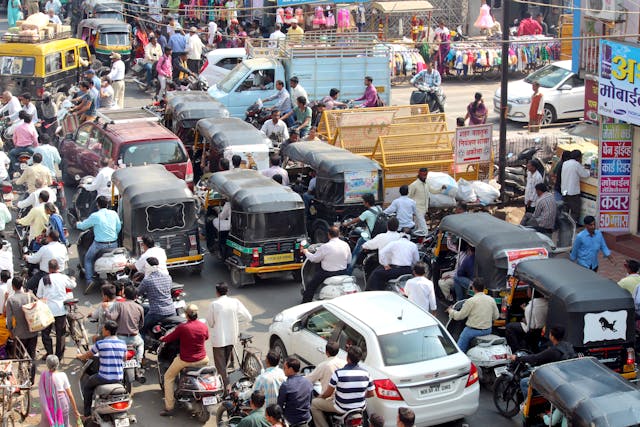‘Don’t be silly, we never had car seats in our day and we were fine’
‘Oh we are only going down the road, we will just drive slowly’
‘Ugh, they cry when I put them into their car seat. It’s too hard.’
‘I’m a good driver. Theek hai’.
In 2022, India recorded 4,61,312 accidents, 4,33,366 injuries, and 1,68,490 deaths due to road accidents. That’s about 19 deaths on Indian roads every hour. Road accidents cost India around three to five percent of GDP, making this a significant cost to the country. Two and three-wheeler accidents result in 48% of the deaths. However, there are a number of car deaths and injuries that could be easily avoided by using appropriate car seats for children.
How Many Kids Suffer Avoidable Injuries or Deaths in India Due to Not Using Child Restraints?
Dr Nihar Parekh says he sees at least two children a week come into his Mumbai hospital due to injuries from not using car seats in a car. Extrapolating that data, there is an estimated 70,000 hospitals in India. Even halving Dr Nihar’s figure, assuming one child attends hospital per week in each hospital, that’s 36,40,000 children a year being injured or killed in car accidents or incidents.
That’s 36,40,000 kids a year injured unnecessarily due to not using appropriate child restraints. Almost 10,000 a day. And, to be honest, the real number is probably a lot higher.
But how many are killed? We ran some math, made some guesses, and estimate 2771 deaths a year in children – almost eight a day—, solely due to not wearing appropriate restraints in cars. According to road traffic safety experts, the true number of deaths may be higher than what is recorded because up to 50% of traffic accidents are unreported. Also, victims who survive the immediate crash but die afterwards are not counted as car crash deaths.
The Need for Car Seats and Approved Restraints
Indian law also requires all children 12 and under to ride in the back seat only. This is because the airbag deployment in an accident could cause serious injury, or they may be catapulted out the windscreen. Airbags can deploy going only at 20km an hour, so driving ‘safe and slow’ is not an acceptable justification.
Why do children need car seats? There are multiple reasons.
- In car accidents, even minor fender benders, unrestrained children become projectiles.
- A baby or child in your arms will fly out of your arms and into the windscreen or dashboard.
- Airbags are designed with adults in mind and inflate at a speed of 322kmph. These can cause serious injuries to children, even death.
- Existing car seatbelts are designed for adults, not the small bodies of children. They can cause massive abdominal injuries and spine fractures which can lead to permanent paraplegia.
- A study by the US NHTSA showed that for children under the age of one, head related injuries were the highest risk in car accidents. In cases of rollover, an unrestrained child is three times more likely to be injured or killed than a restrained one.
- Children not in car seats tend to move around a lot, becoming a hazard and distraction for the driver. Being in a car seat gives tremendous peace of mind and allows better focus on driving.
- Also, never, ever, ever, let your child travel in the car standing through the sunroof. Children die doing this.
There are many videos online showing how unrestrained children can be injured or killed in accidents. There are stories of children killed when an appropriate restraint may have saved them. For example, a child was in her mother’s lap who was seated on the front seat. Investigators said the toddler’s head banged against the dashboard due to the impact of the accident, killing her instantly.
Or another example, where a two-month-old male baby was travelling unrestrained on his mother’s lap in the rear of a car driven by the child’s uncle. The crash was fatal for the baby, who suffered a severe head injury, while the two adult occupants of the car had only minor injuries.
As India continues to advance economically, more people are becoming car owners. Indian passenger vehicle sales increased by 26.7% from 2022-2023. The Indian government has been very good implementing laws and legislation to acknowledge this growth. Since October 2017, all cars sold must be equipped with ISOFIX points that anchor child seats to the car’s structure without the use of seatbelts.
Why Aren’t More Kids Safely Restrained in Cars in India?
This is incredibly difficult to answer, and it’s multifaceted.
- More than 75% of parents in India not aware of child restraint systems in cars
- 56% of parents aren’t willing to pay for a car seat
- Because most passenger vehicles in India are still motorcycles and scootys, infant car seat use may be low priority for police to monitor
- In-laws and parents not supporting the use of car seats
- Myths around carseat use
- Use of cars for more than intended passengers. Car seats take up valuable space
- Excuses such as ‘we are just going nearby’ or ‘traffic is very slow, no accidents will happen’
- Children don’t like being in car seats, and can cry and get upset intially
- Car seats are in cars but aren’t used correctly, with straps not tight enough or the harnesses not used correctly. This may cause more harm in an accident, not less.
However, mostly, this absence of car seat use is due to social norms. Even Indians and expats who have lived overseas and followed local car seat laws often revert to poor practices upon return to India.
Should You Use Car Seats for Children In India?
Absolutely. The law requires it, and your child’s health and life may depend on it. There are some good local affordable brands like R for Rabbit, as well as international pricier ones such as Graco which can be found online.
If you travel in a Ola or Uber with no accessible seatbelts, report them, either with functions provided by the app, or by giving the driver a very low rating.
Even if you are the best driver in the world, there are a 326 million other vehicles on Indian roads. You cannot gaurantee your safety, even driving short distances. Babies and children are fragile. Arms cannot hold them in an accident, the force will cannonball them away through the windscreens.
It is not easy to implement car seat use. Toddlers and babies can be very forceful in their disapproval. Because of the culture and historical use of car seats, the older generation who say ‘it was fine in my day’ and ‘I can just hold them, it will be OK’.
Having children restrained correctly, and a zero-tolerance policy when enforcing it with your child can help avoid needless injury and death. You cannot control anyone else, and anything outside your car. But you can make your child safe. Your peace of mind is worth it.
The Math: Road Accidents and Child Deaths in India
Here, we must make some guesstimates based on incomplete data. We have used figures and statistics supplied by the Ministry of Road Transport and Highways from 2022 unless stated otherwise. We have supplied math when we’ve made calculations. This section is complicated, so skip it if math makes your head spin.
- 9,528 people under 18 are killed in accidents every year, 5.7% of the total deaths. 4848 people died with age not recorded. If we assume 5.7% of those 4848 people are under 18 (based on India’s population demographics) years, that’s 276. 9528 + 276 = 9804.
- This means 9804 people under 18 years are killed every year in road accidents.
- It’s suggested that children from 36kg upwards can use an adult seatbelt reasonably safely. In India, that’s about age 11. However, the law requires child restraints for all children under 13, so that’s the age we have used.
- Age distribution across this age band 0-18 is difficult to ascertain. In 2022, 336,453,000 children were aged 0-13 years old, and 464,034,000 kids aged 18 and below. This is about 72.5%, so we can guesstimate 7107 children aged 0-13 are killed every year in road accidents.
- Non wearing of seat belt causes 8331 deaths every year and 25,087 injuries
- Cars, taxi, van, and LMV accidents cause 21,040 fatalities
- 21,040 fatalities, lack of seat restraint causes 8,331 deaths, that’s 39% of all car deaths caused by lack of wearing appropriate restraint. 39% of 7107 children killed every year is 2771.
That’s 2771 children aged 0-13 years old, dying in cars every year, because they are not in approved restraints. 2771 wholly preventable deaths.
This figure is probably far from accurate and much less than the reality; many deaths and accidents are not accounted for in official figures, and likely the ratio of death from car accident is far higher in young children than older children or adults due to their fragility.

